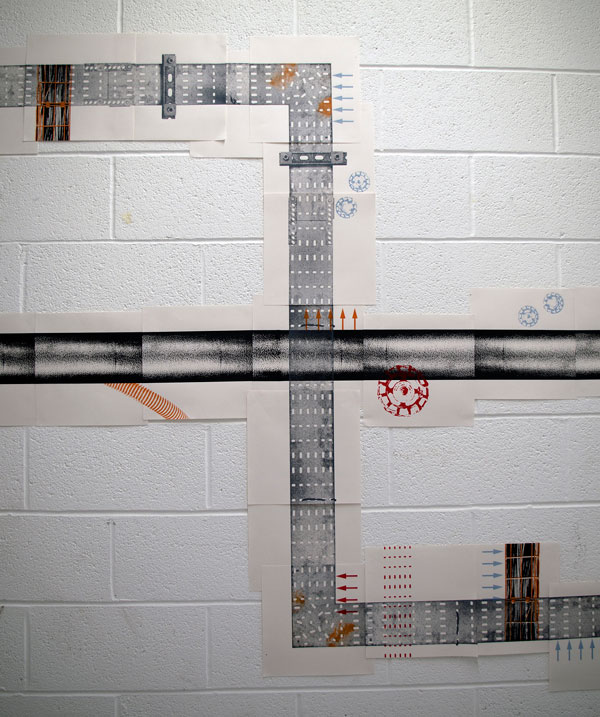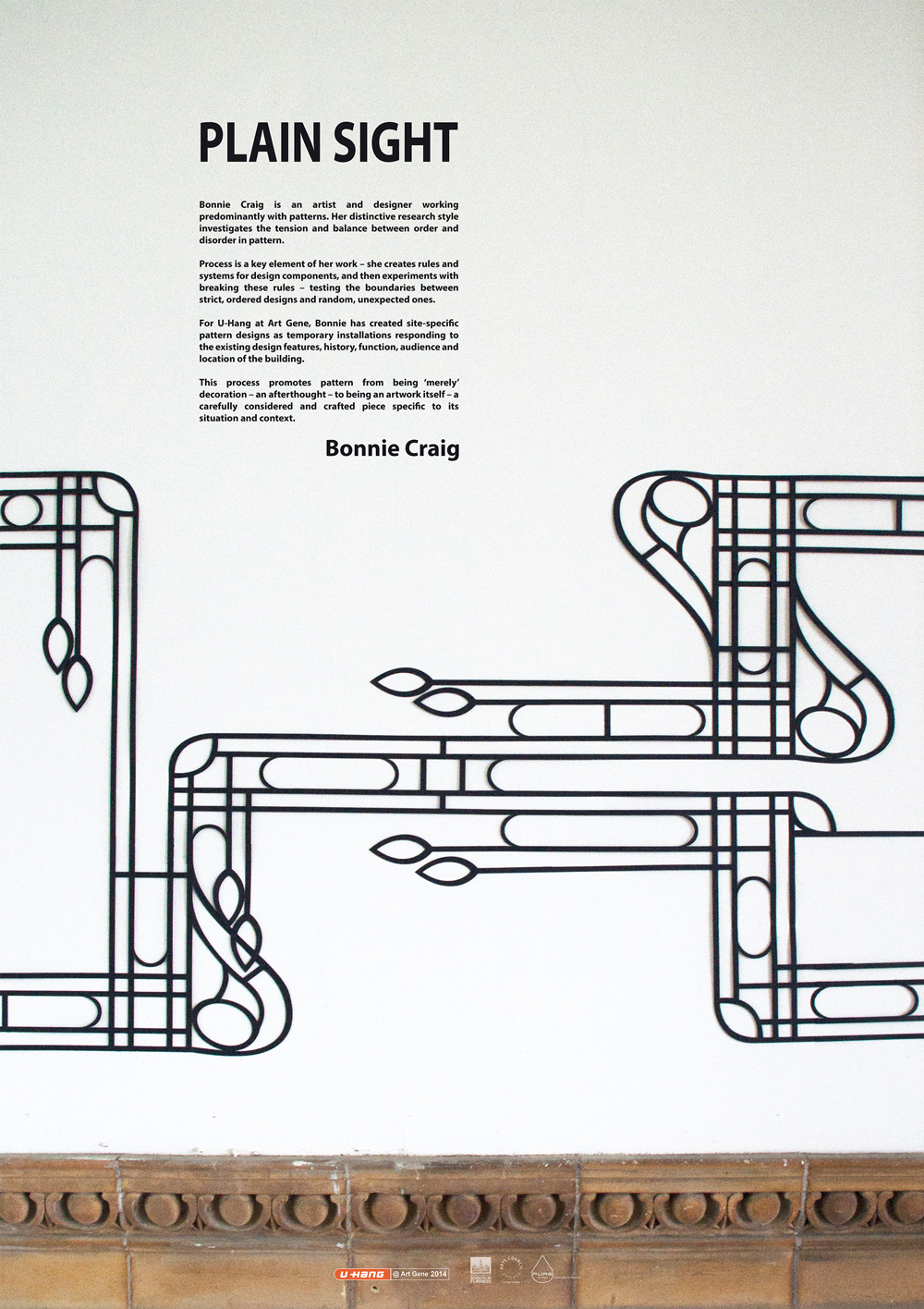One week, one corridor
I’m currently working on an AA2A residency placement at the University of Lancashire’s print department. As this is where I did my MA, it’s really nice to be based somewhere that I’m familiar with, plus the people and facilities here are lovely. I started my placement back in October, but as I was going to be away for a lot of November and December, I wanted to get my first project completed before I went, so I could have work on show while I was away.
I was allocated a section of corridor to exhibit in. It’s a corridor I’ve walked up and down a lot over the last few years, but when I walked along it with a view to exhibiting work, I realised I hadn’t looked at it very hard before.
The walls are a weird painted breeze-block type affair. And the ceilings are a mishmash of exposed pipework, wires, switches, lights, board, joints and machinery. I get excited by seeing the workings of things that I don’t understand – I feel as if I’ve been shown a glimpse of a secret world. Seeing what’s under a dug-up road, engineers working on those electrical boxes on the street that are full of wires, even mysterious goods trains going through a station and never stopping – they all make me think about how much I don’t know about what goes on around me.
So this corridor seemed like an opportunity to look more at what was there, and hopefully get a few other people to look a bit harder as well.
I had a week to research, plan, make and display everything, which in hindsight was pretty ridiculous. But it was good to learn which parts of the process I’m comfortable doing quickly and where I felt as if I was cutting corners.
My plan was to create a long piece of work that spanned the part of the corridor I had to fill using modular pattern elements made out of the textures and shapes from the ceiling.
I started with photos. Lots of them, in black and white with increased contrast to reduce them down to the most basic shapes and patterns. No time for tone!
Most of the pipes were grey/beige anyway, but what excited me colour-wise was the odd bit of bright label or printing, so I kept this in some of my photos.
I picked out areas of the images to develop into positives for screenprinting and spent some time working digitally on the image files to isolate each part and make up modules that could be repeated, rotated, combined and overlapped. This took more Photoshoppery than I’d hoped and was pretty time consuming.
Next step was to make up the screen and get printing. I didn’t have a plan for the main composition, but wanted to experiment with combining the different elements as I went, with fingers very crossed that it would all come together in time. I’m naturally a bit of a planner, and doing something with no time for mistakes leaves me twitchy.
As I tried out the various combinations of modules, a plan emerged. I decided to use two main lines – one going straight along the corridor made from a repeated section of pipe and one that wound around the pipe made from a metal plate. This would provide continuity throughout the piece and reflect the continuous nature of the pipes in the ceiling, so I could then add detail from the rest of the modules in layers over the top.
I had a day to print everything. So that stage had to be decisive and quick. I’d already decided to stick with the colours I’d used in my research – greys with accents of bright colour here and there. I also found I could paint on the odd patch of colour to the screen itself, giving a hint of the rust and dirt on the surfaces.
I was printing on 12 x 12 inch squares of paper – even though I was covering a large area, they are really quick to print and are cheap. I also wanted to work in a way that meant I could play around with positioning as I put it all together. Like a giant puzzle.
A day to print turned into nearly two, so my day to put it all up turned into a few hours. I was working right up until the building closed, the night before I was leaving for two months, but it got finished. Just. It took 47 hours in total, and I used 88 prints in the final piece.
It all felt like a bit of a dream, so coming in this morning was a good chance to confirm it had really happened and give myself a bit of time to reflect on what I’d made before taking it down. So, this is what I learnt:
- I probably knew this already, but although I can do tight deadlines, I’m not someone who thrives on them. I prefer the luxury of getting a bit lost in my research and some contingency time if things don’t work as planned. But…
- adrenaline gets me a long way.
- Lots of ideas got thrown out before I’d really had time to explore them – I wish I’d documented these better, so I could come back to them more easily now.
- I usually take on too much, but it always gets done and that feels brilliant.
- Taking photos at 7.55 on a Friday night, when the building shuts at 8, is not a good idea. I’ll be back in next week with my tripod, some daylight, snacks and a calmer mood.
- This bit (thinking about what I did and putting it into words) takes a while but it is really helpful; it all makes a lot more sense now.
- As a process, this worked - I learnt a lot from it and was pleased with the journey it took me on. But I'm not crazily happy with the final piece - I'd have preferred to slow down and spend a bit more time on decision-making. Too many of the questions I would ask about it as a viewer ('Why is this bit like this?') have the answer: 'It just is - there wasn't time to do anything different' and that leaves me a bit dissatisfied.
- I can fill a big space. I’ve done it a few times now, and it's started to feel exciting, not intimidating. (I'm VERY happy about this!)
Here are a couple of photos of the final piece - more to follow next week...
Plain Sight exhibition - final photos
A few photos of my Plain Sight exhibition. More here.
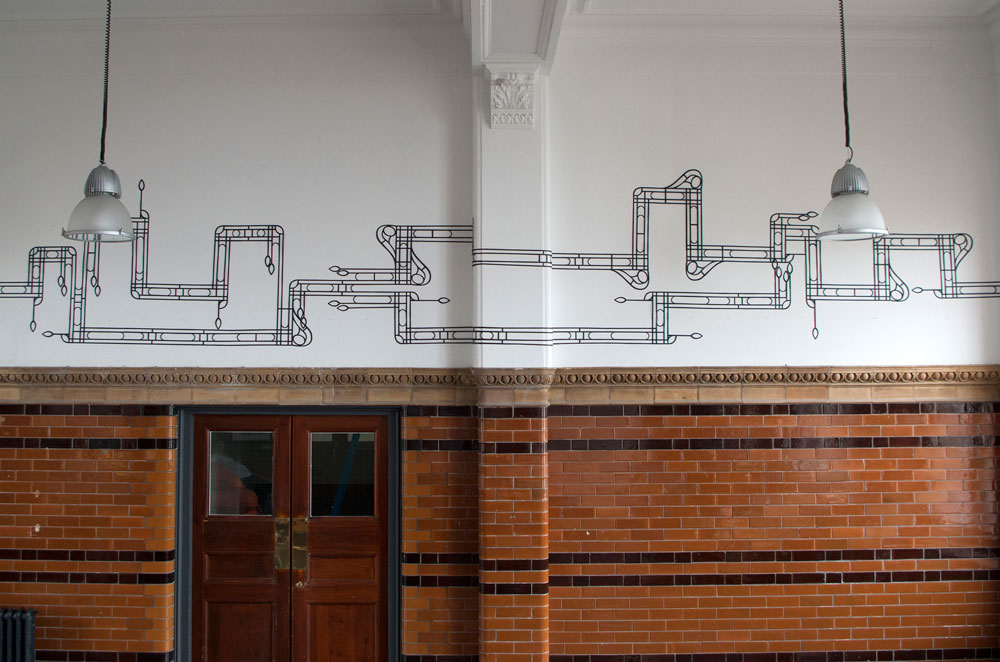
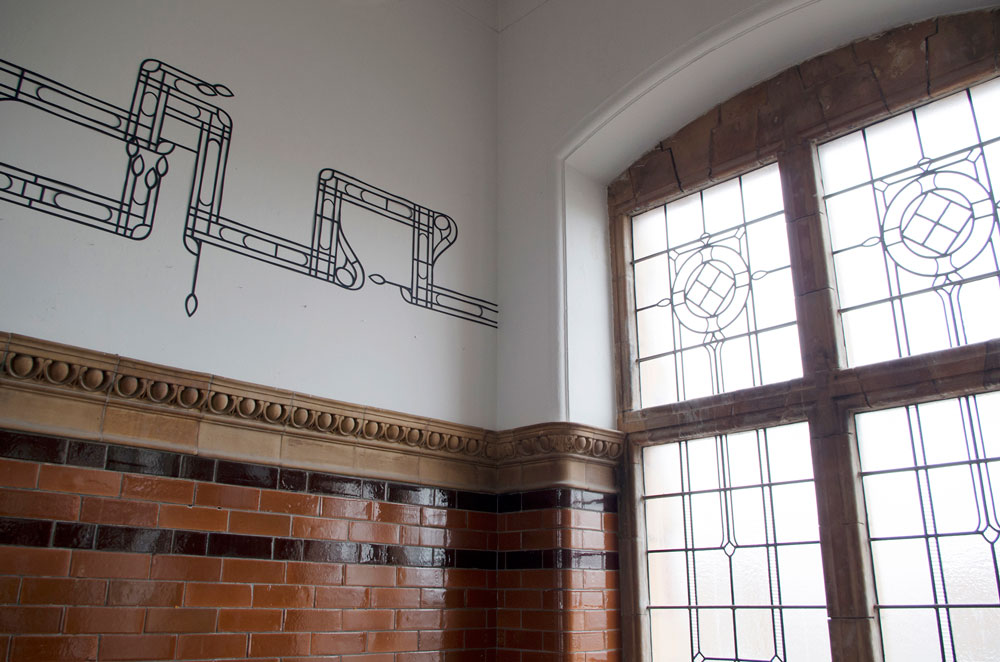
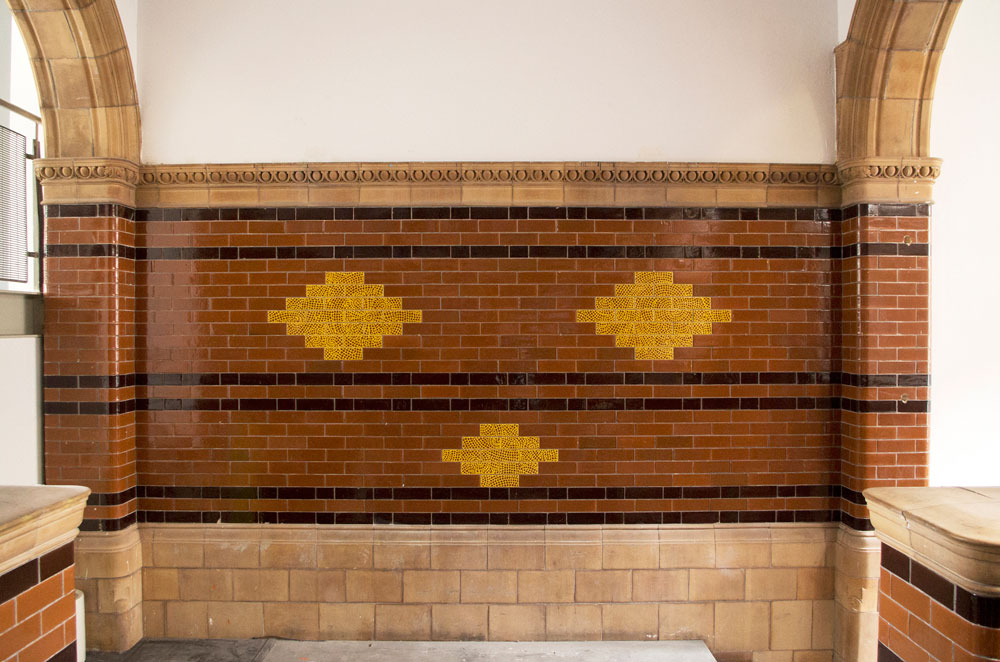
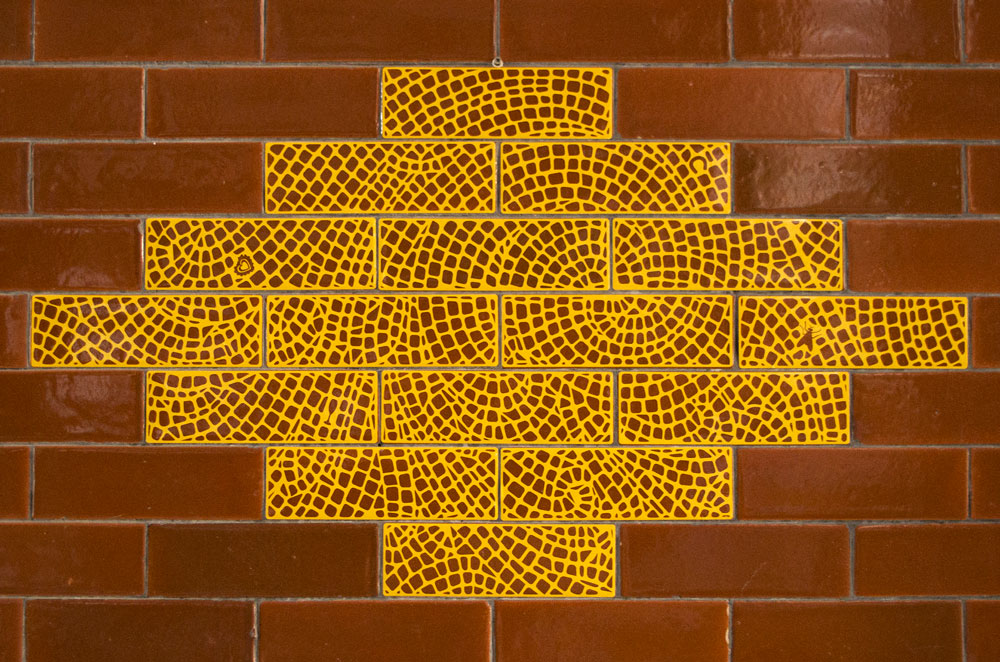
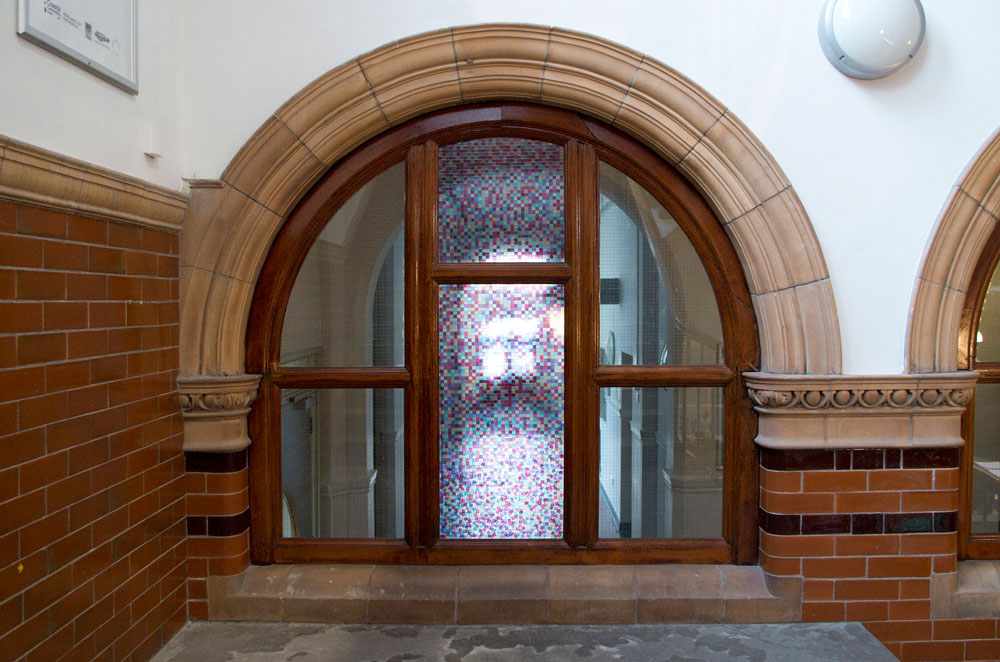
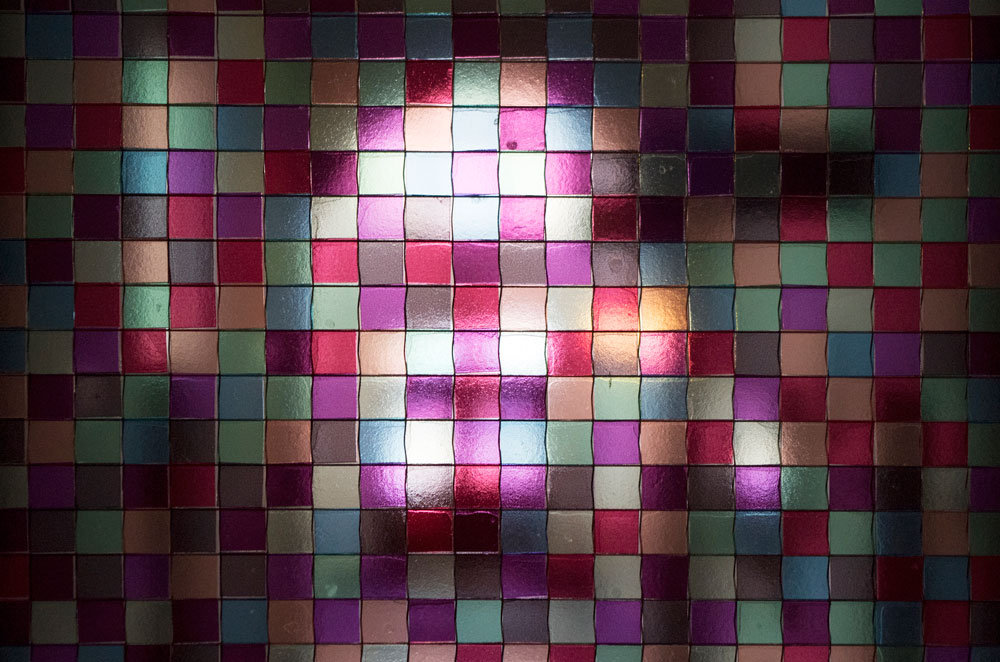
U-Hang Residency: Week 4
It’s finished! My first exhibition – Plain Sight – is up and on display for this week in the Nat Tait Centre in Barrow. The week went by in a bit of a blur of giant ladders, Blu-Tack, sticky vinyl and spirit levels. By the weekend I was knackered, aching and happy. Here’s the poster – photos to follow soon, along with some thoughts on the whole residency process and what I’ve learned…
U-Hang residency: Week 3
The pressure was on this week, as I needed to finish my final designs in time to get everything made and set up. I like creating modular work that requires lots of time and patience at the end to get everything in place. There have been a few points this week where I’ve questioned my reluctance to take shortcuts – why print a thousand squares that need sticking on a window individually instead of one big square with the design printed on? It’s made me realise that this stage of the process is important to me – arranging the modules as I go, deciding on the final design there and then and seeing it come together bit by bit – it all feels rewarding. I started the week by getting some samples made – laser-cut card based on the window pattern design, cut-out vinyl with elements of mosaic patterns and printed clear vinyl to ‘colour in’ one of the internal windows.
Playing about with these in the space gave me an idea of what worked best, and the next step was to decide which areas of the building I was going to install work in: the white space above the glazed bricks in the landing, the glazed brick wall in reception and an arched internal window that looks up to the stairs to the landing.
Finally, having decided on the design elements I wanted to make, I needed to draw digital versions of these, ready for cutting and printing. Again, I couldn’t bear to take shortcuts – drawing every single mosaic tile felt important. I use a graphics tablet for drawing, and discovered that the ‘wrong’ way I hold my pen (which I never changed because, despite being told off for it all the way through school, it works…) causes problems on a graphics tablet. So, at the age of 33, I’ve spent a considerable part of my week learning how to hold a pen.
Clutching my pen correctly and with the designs at the printers, I’m now nervously waiting to pick up the final work and get it installed…












